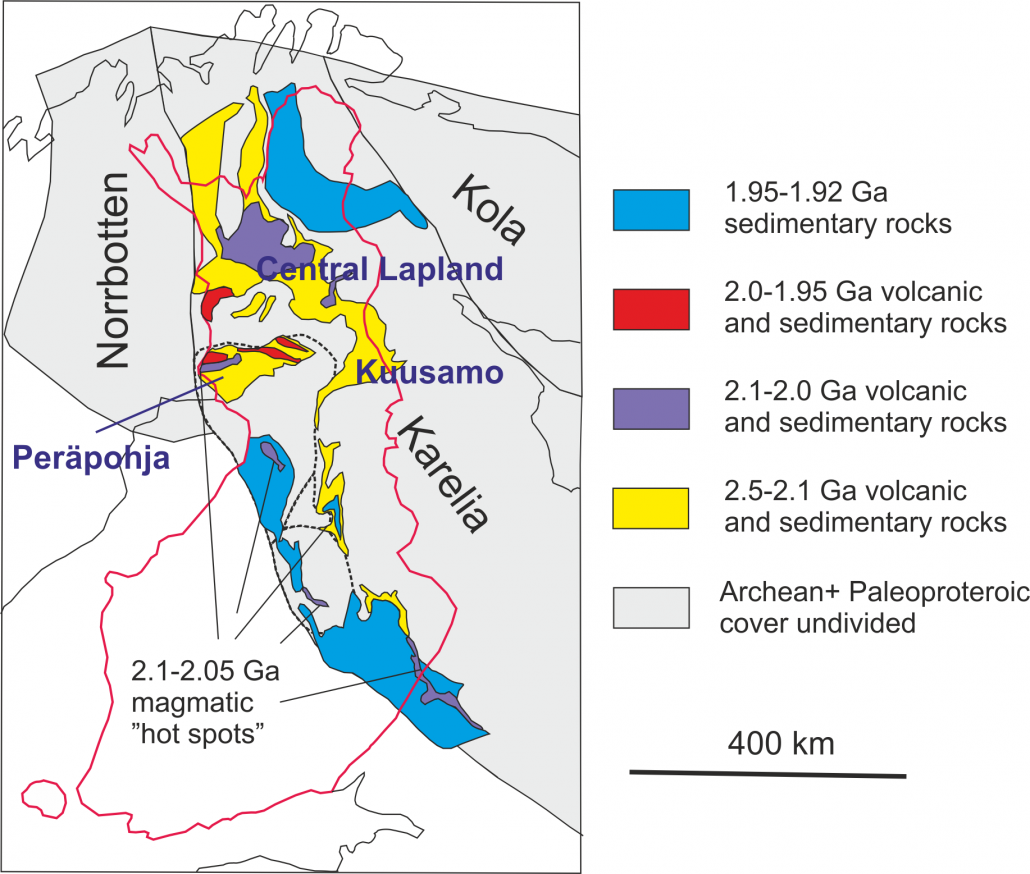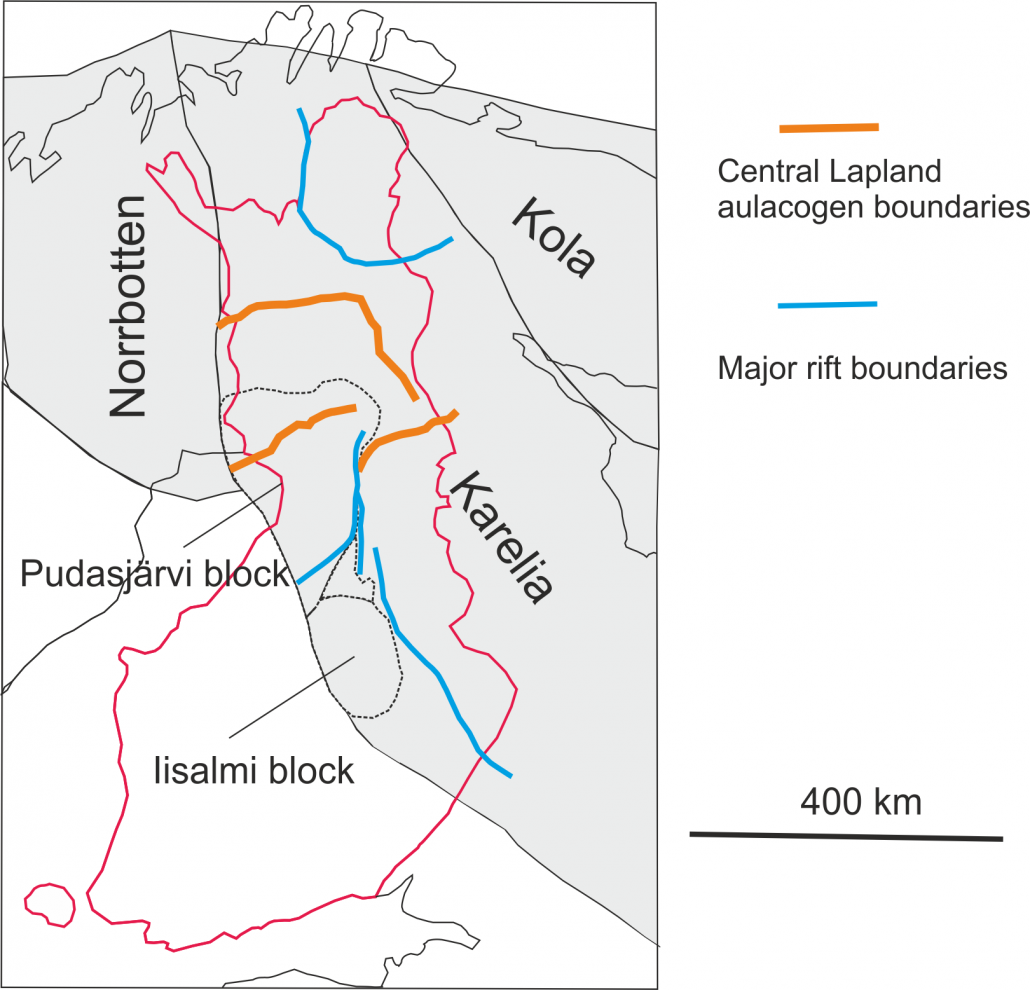The Archean exemplified episodic rifting events between 2.50 Ga and 1.95 Ga during the Paleoproterozoic era. The 2.50–2.44 Ga rifting event, possibly related to a major mantle plume, triggered emplacement of abundant 2.44 Ga layered intrusions in northern Finland.
A shallow intracontinental basin stage followed at 2.44–2.1 Ga with episodic intracontinental and continental margin rifting events seen as accumulations of both mafic and felsic magmatism in the Peräpohja and Kuusamo schist belts and Central Lapland Greenstone belts (Fig. 1). Evolution of these basins was coincident with the Great Oxygenation Event, which supported pre-concentrations of some metals (e.g. Cu, Ni, Co, Mo, V, Au) in carbonaceous material rich sulfidic sediments.. Large-scale plume event initiated emplacement of layered intrusions and komatiite-picrite-high Mg-basalt sequences at 2.1 Ga, followed by continental breakup with bimodal volcanic complexes (“hot spots”) along the Karelia-Svecofennia and Karelia-Norrbotten boundaries at 2.06 Ga (Fig. 1). During this breakup, a failed arm of a triple junction formed, seen today as the Central Lapland Granitoid Complex, an uplifted root of an aulacogen (Fig. 2).
Break-up was followed by continuous extension at 2.0-1.98 Ga in the aulacogen and a new spreading within the pre-existing passive margin at 1.98-1.93 Ga at the Karelia-Svecofennia boundary. This latter stage was associated with deposition of voluminous turbidites.
The episodic rifting stages formed deep crustal-scale structures (Fig. 2) and coeval shallow-water basins with evaporates, carbonaceous material rich greywacke and clastic sediments accompanied by diagenetic fluid circulations or gravity and thermal anomaly driven flow of basin fluids that led to metal enrichment, progressive fluid development and rock alteration. All important features in the later genesis of orogenic gold deposits in the Paleoproterozoic cover rocks.
(Last update: 20.05.2020)

